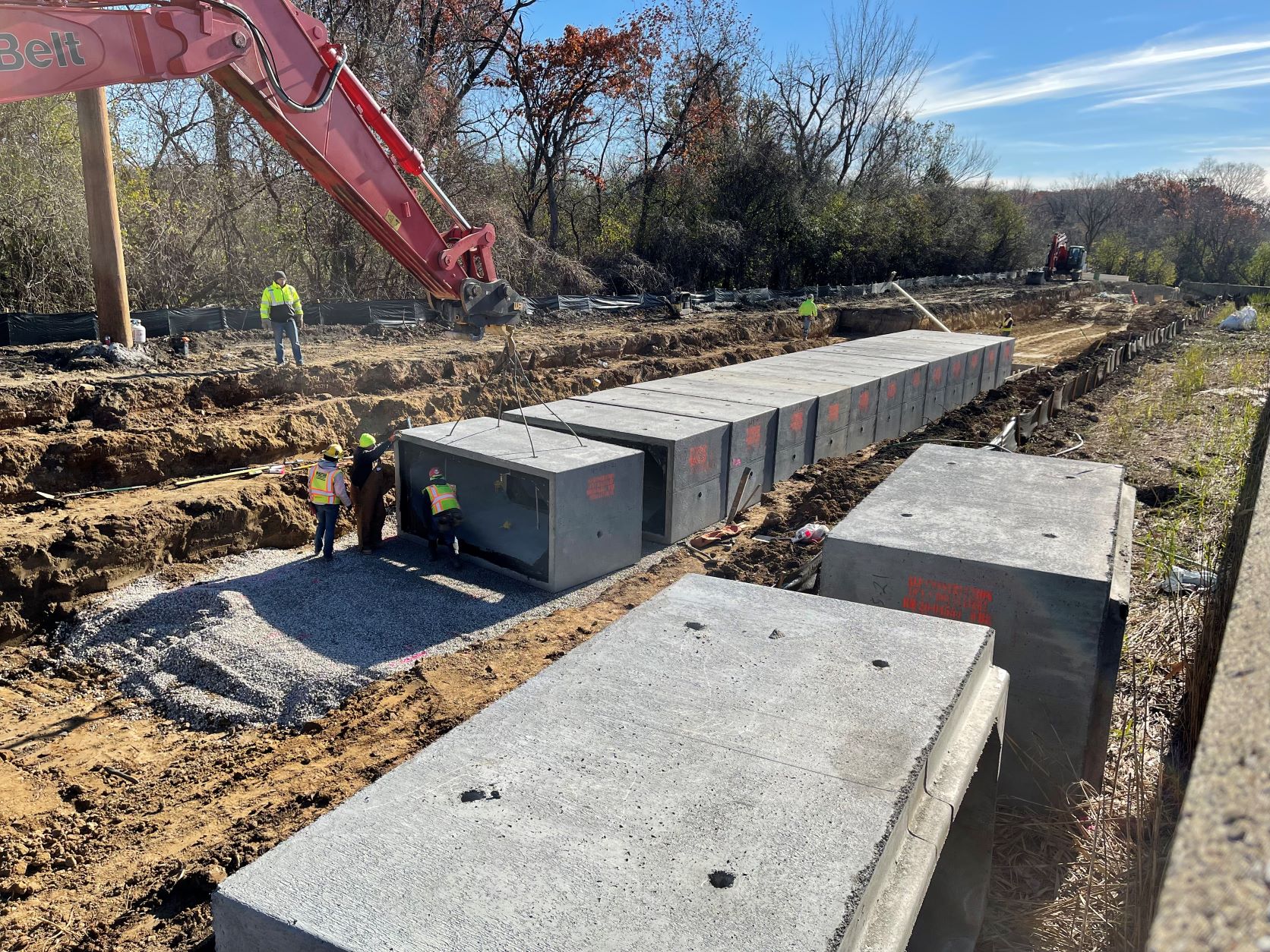
Services Offered
Environmental Consulting Firm in Illinois
Remediation services in chicago
Environmental Assessments & Remediation
Phase I Environmental Site Assessments
GEC provides comprehensive Phase I Environmental Site Assessments (ESAs) for multi-residential, commercial and industrial properties. They are conducted in accordance to the most current version of the ASTM Practice E 1527 guidelines. Many of the end users for Phase I ESAs include commercial banking and loan departments, developers and builders, environmental attorneys and private purchasers. Phase I ESAs are required as part of real estate transactions to protect both the purchaser, seller and other parties involved.
Phase I ESAs involve comprehensive historical evaluation, along with site inspections, regulatory database reviews and interviews with onsite key personal, local and/or county representatives. Typically, Phase I ESAs can be completed within two weeks upon authorization to proceed. GEC also provide Reliance Letters to commercial lending as part of the Phase I ESA process.
Phase II Environmental Site Assessments
As part of our broad services, GEC provides expertise for conducting either limited or comprehensive Phase II ESAs. Studies are conducted for commercial and/or industrial properties for the purpose of evaluating potential soil, sediment, groundwater and/or surface water contaminants.
GEC provides systematic approach in designing and implementation of Phase II ESAs obtaining overall extent and magnitude of any potential environmental impact on the property, as well as assessment for offsite contributors. The Phase II ESAs are conducted in accordance to regulatory guidelines such that information and data can be used for completion of regulatory reporting documents. The results of the Phase II ESA can provide the user/owner/lender with the necessary information to make informed decisions with regards to recommendations for further action, including remedial alternatives.
Remediation
Upon completion of the Phase II ESA or investigative studies, GEC can provide remediation services in chicago and applicable remedial alternatives to address any potential contaminant impact on the property. Such alternatives used by GEC would include either: soil excavation and disposal, in-situ biotreatment, soil vapor and/or groundwater extraction and treatment. GEC evaluates the alternatives based on types and concentrations of contaminants present and their respective exceedances to the regulatory standards, federal classification (i.e., non-hazardous, hazardous, special), depth and occurrence, location with respect to property structures and physical constraints, characteristics of soil, groundwater and bedrock.
Vapor Intrusion & Indoor Air Quality Assessments
Sub-Slab/Subgrade Evaluation
GEC provides evaluation and environmental assessment of potential vapor intrusion at commercial, public and/or industrial properties. Evaluations can be conducted using sub-slab vapor monitoring and testing within the building areas, or along property exterior grounds. Air samples are collected in Suma stainless steel canisters under known vacuum, until sufficient samples are obtained. Canisters are submitted to specialized laboratories, and evaluated for volatile organic compounds (VOCs). Vapor gases can be evaluated either as one-time temporary sampling probes, or through permanent monitoring points for multiple sampling events. VOC data is compared to the state and/or federal guidelines for sub-slab air quality standards.
Indoor Evaluation
GEC can also provide testing of indoor air quality VOCs, and data will be compared to the regulatory criteria. Based on the assessment data, GEC will provide appropriate approach in mitigation of vapor encroachment VOCs that may be present subgrade, sub-slab or within the indoor areas of the buildings.
Underground Storage Tanks (USTs)
UST Removal & Abandonment - GEC offers consultation, oversight, documentation and reporting of underground storage tank (UST) removal and/or abandonment. GEC can coordinate with well-established UST removal/abandonment contractors, disposal landfills and hauling companies to complete any project. GEC will evaluate the UST system on the property, and provide and the appropriate approach on how to best remove and/or abandon the UST system according to local, county and/or state regulatory guidelines.
If abandonment is required, then a limited Phase II ESA is necessary in order to obtain a permit. GEC provides Underground Storage Tank Services in Illinois and UST removal closure documentation to verify potential impact at the excavation areas, and provide recommended approach for any needed remedial alternatives to meet proper closure and/or abandonment. GEC will prepare and submit all necessary regulatory report documents to meet the local, city and state requirements.
Construction, Engineering Controls & Waste Management
Construction Planning and Reporting Documentation
GEC provides detailed project planning, daily reporting and final construction documents that are required for infrastructure, tollway, highway, bridges, railroad, sanitary/sewer pipelines, municipal downtown improvements, and numerous other types of construction projects. Pre-Construction planning documents include technical approach on management of non-special, special, and hazardous waste soil/fill and liquids. Planning documents also provide detailed information on soil sampling and analysis, disposal acceptance, manifesting, soil staging, management, and offsite removal needs. Pre-Construction Planning documents also provide discussion of location and extent of known regulated substances, field monitoring approach, erosion control, stormwater management and other aspects of the project.
GEC also provides final construction reports that include all daily monitoring reports, detailed documentation and backup of soil management, water management, landfill ticket receipts of various wastes that include CCDD, non-special, special and/or hazardous waste materials.
Clean Construction Demolition Debris (CCDD)
Evaluation and certification for Illinois based projects. GEC can evaluate the historical aspects of the project area, and obtain necessary samples for evaluation of the fill/soils, along with preparation of the IEPA Form 663 to certify project site soils to be disposed at an approved CCDD facility.
Contaminated Soil Management
GEC provides consultation and evaluation of contaminated soils and/or groundwaters for construction projects. Proper evaluation is based on historical uses and sufficient analyses are required to properly obtain landfill disposal acceptance. GEC also offers preparation of disposal manifests and coordination with the construction management team to ensure that proper disposal is conducted as part of any project.
Soil Field Screening
Construction projects may require field screening of potential contaminated fill/soil materials encountered during excavation work, in many cases dealing with unknown conditions. GEC can provide field screening and evaluation services to address any potential fill/soil contaminant concerns, and make necessary decisions on how to handle, manage and dispose of any unforeseeable contaminated materials.
Soil Management Plans
GEC can provide comprehensive plans which address numerous aspects of construction projects, when dealing with known or unknown environmental issues. Soil Management Plans provides thorough guidelines in dealing with contaminated fill/soils that may be encountered during planned excavation or earthwork activities. Such plans also address stormwater management, dust emissions, vapor monitoring and contingency plans for dealing with unknown environmental issues. Soil Management Plans provide assurances that all environmental issues can be properly addressed during construction redevelopment projects such as Brownfield properties, former industrial and/or commercial properties.
Vapor Membrane Controls & Engineering Controls
Construction projects known as having volatile organic compound (VOC) impact may likely involve the need for vapor migration mitigation and control. Approved vapor membrane barriers may be installed over the foundation, and venting may also be incorporated to remove any accumulated vapors within the substrate fill/soil below the foundation. These measures have been successful in preventing migration of VOCs into the building, and meeting regulatory agency requirements under the new guidelines for Indoor Air Quality laws. Engineering Controls may include installation of physical barriers over known contaminated areas of a construction project, thereby ensuring no direct impact to the public or site habitants.
Asbestos Inspection / Testing
Asbestos
GEC offers asbestos inspection of multi-residential, commercial, school and industrial buildings, using approaches approved by county, state and federal (AHERA, NESHAP) guidelines. GEC offers services from limited asbestos sampling for small renovation projects to comprehensive asbestos surveys for demolition and major renovation projects.
GEC can also provide services to mitigate airborne particulate and dust during construction projects where residual asbestos may be present. GEC approach ultimately is determined to best assist the property owner to meet any legal requirements, as well as reducing liability with respect to asbestos exposure to property occupants.
Lead Paint & Lead-in-Water Inspection/Testing
Lead Based Paint
GEC provides services for comprehensive lead-based paint (LBP) inspections and assessments according to state and federal regulatory guidelines. LBP can be evaluated using X-Ray Fluorescence (XRF) sampling technology, or by sampling of paint chips and/or wipe sampling of paint surfaces.
Lead-in-Drinking Water
GEC also provides services for determining the presence of lead-in-drinking water within single family, multi-residential, public, school and commercial buildings. Upon determining the results, GEC will prepare a detailed report summarizing the findings and potential sources. Reports can also provide recommended approaches in addressing the elevated lead in drinking water in order to meet state and/or federal safe levels.























.jpg)
























